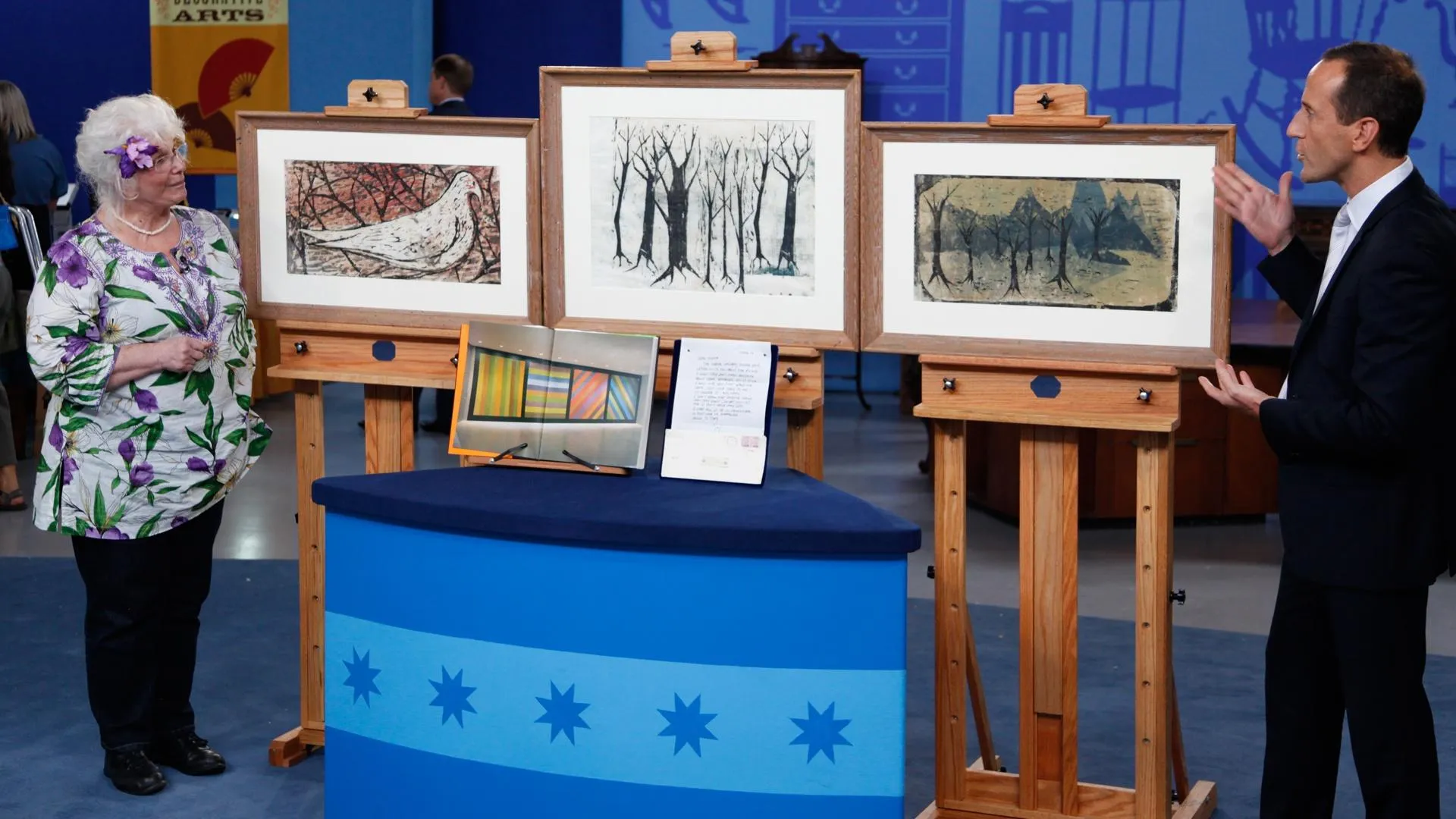APPRAISER: You've brought in this most fascinating painting by Francis A. Silva. Tell me a little bit about how you acquired it.
GUEST: I inherited it from my father, and I got it about three years ago. He inherited another painting, which is here, from his father, and a gallery in New England offered to swap this picture for multiple other pictures so that my father and his sister and brother would then have other pictures to hand down to their children. My father picked this picture out as one that he liked. I have three sisters, so he needed to pick four pictures. So when it came time to divide up his estate, I was out here in the West, and my sisters were back in New England, and they sent me pictures of the four choices I had, and of course I liked sailing, so I picked the sailboat. Then recently, just this last May, I found some documentation in my father's desk which implied that this was significantly the most valuable picture relative to the other three.
APPRAISER: The painting in the photograph is by George Inness and is a view of Perugia, Italy, done in 1879. And it's quite a large vertical landscape. Had you known much about Silva?
GUEST: No, no, I didn't.
APPRAISER: Well, Francis Silva was born in 1835, and he died in 1886. He was from New York, and he basically was self-trained. He started out as a sign painter, and he did that for a number of years until he joined the New York Infantry during the Civil War. And at the end of that, in 1865, he really began his painting career. He had a studio in New York until the end of his life when he moved to New Jersey, which is where his wife was from. And he's known for these wonderful marine scenes, and he painted from Narragansett to Gloucester, and the New York Harbor area. One of the best things about Silva is his use of contrast of shadow and light, and he also was an artist who was well known for his luminist quality, the golden light that you see at sunrise or sunset. This particular one does not really have as much of the golden or peachy color that you often see, but it certainly has really wonderful striations of light. His works are usually very tranquil. As you can see here, we have a sailboat moving toward shore. What's special about this is this wonderful lighthouse, which is called Eastern Point Light. That is the entrance to Gloucester Harbor. Gloucester was a fishing mecca, and certainly the industry is still important there today. The water here has a little bit more movement than you often see, and there are also figures on the boat. Normally, the boats are farther at a distance, and so you don't always see the figures. The piece is dated '74. 1874 is a very good date. It's sort of in the middle of his career. It is in nice condition, but it has been lined, and that means backed with another canvas. And at the time it was lined, the adhesive that they used was wax. And so there are vertical striations that you see, particularly here in the water, and that is a result of the wax bleeding through to the surface. It's recommended that that lining be taken off and redone.
GUEST: Okay.
APPRAISER: In which case, the surface would look more normal. When your father inherited it, what was it valued at?
GUEST: In 1981, they said it was approximately $21,000.
APPRAISER: It does lack some of that rosy, peachy color that many collectors like to see, but marine painting has always been popular. It remains popular even though some other parts of the market are not. And a gallery would probably sell it for around $250,000.
GUEST: Holy smoke!
APPRAISER: Yeah.
GUEST: That's unbelievable.
APPRAISER: The artist has made, actually, up to over a million dollars.
GUEST: Really?
APPRAISER: For something much larger, and again, with the rosy...
GUEST: More characteristic look.
APPRAISER: Right.
GUEST: Wow.
APPRAISER: If your grandfather had kept the Inness... The Inness was valued at what at that time?
GUEST: About $80,000.
APPRAISER: $80,000. Well, I believe this would probably be in the $800,000 category. And as I recollect, it may even be in a museum at this point in time.
GUEST: Wow.









